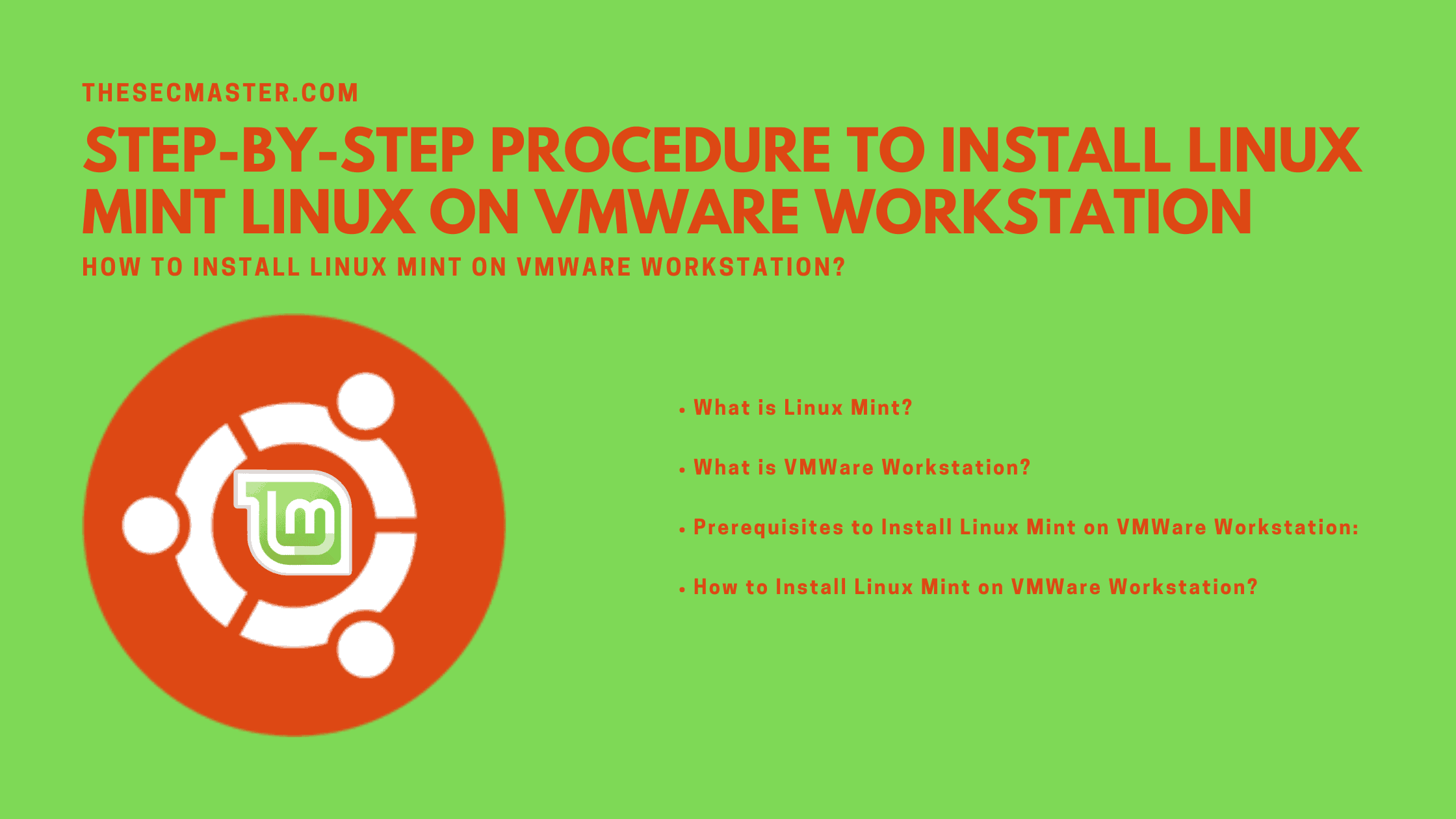Table of Contents
Step-By-Step Procedure To Install Linux Mint Linux On VMWare Workstation
As more as the technology develops it gives more flexibility, usability, and portability. With the introduction of cross-platform technology like virtualization and remote computing, any program can be run on any platform irrespective of compatibility. Hardware virtualizations allows to create a fully working virtual machine on any platform. VMWare Workstation is one such hardware visualization platform available in the market on which any virtual machines can be created. In this post, we will show you how to install Linux Mint on VMWare Workstation to create a full-fledge working Linux Mint virtual machine.
What Is Linux Mint?
Linux Mint is a Linux operating system based on the Ubuntu platform. Linux Mint operating system is most likely developed for desktop and laptop computers. Its multimedia, graphic design, web, and gaming support have made Mint the fastest-growing Linux distribution. For more information, visit its home site.
What Is VMWare Workstation?
VMWare Workstation is an application developed by VMWare to create virtual machines, containers, and Kubernetes clusters on any desktop or server system. VMWare released VMWare Workstation in two products: VMWare Workstation Pro and VMWare Workstation Player. VMWare Workstation Player is released on a free license with limited features, whereas VMWare Workstation Pro is an enterprise paid version that has loaded with a lot of features. Full documentation is published on the VMWare portal for free. Refer to the documentation from here.
Prerequisites To Install Linux Mint On VMWare Workstation:
To install Linux Mint on VMWare Workstation you just need a physical machine, VMWare Workstation Pro or Player, and Linux Mint ISO image.
A host system with minimum:
8 GB of memory
A quad core CPU
500 GB of Hard Drive
VMWare Workstation Pro or Player application:0
Linux Mint Operating System to install on VMWare Workstation.
How To Install Linux Mint On VMWare Workstation?
Step 1. Fier up VMWare Workstation
Download the VMWare Workstation application for your host operating system and install it on your machine. The installation procedure is pretty simple and straight. Read the documentation for more details. Open the app after installation. Create a new Virtual Machine.
Step 2. Select Custom Configuration Wizard
You can choose either Typical or Custom Wizard. We recommend selecting Custom if you want to install with all the configurations. If you are okay with default configurations then go ahead with Typical configurations.
Step 3. Select Virtual Machine Hardware Compatibilityrkstation 16x – Next
Go with the default option if you don’t have the choice.
Step 4. Select the Operating System Media
Select ‘I will install the operating system later’ for an interactive installation.
Step 5. Select Guest Operating System
Step 6. Name the Virtual Machine Name and location
Type a name and give the location details.
Step 7. Allocate the Processors
Assign the processors, Calculate the processor required to run the host machine. Assign the leftover resources to the virtual machine.
Step 8. Allocate the Memory for Virtual Machine
Memory allocation calculation is the same as the processor allocation. Leave sufficient memory for the host system and allocate the remaining memory for the virtual machine.
Step 9. Choose the Network Configuration
Select any one of the network configurations as per your requirement.
Step 10. Select the I/O Controller Type
Step 11. Select Disk Type
Step 12. Select Virtual Disk
Select the Virtual Disk if you have or create one.
Step 13. Select Disk Capacity
Select the disk size. Selecting a single disk will increase the performance. However, selecting a split disk will help in the disk transfer scenario.
Step 14. Specify Virtual Disk File
Step 15. Create Virtual Machine
Step 16. Supply Linux Mint ISO Image to Virtual Machine
Download Linux Mint image. Edit the CD/DVD settings and import the downloaded Linux Mint image.
Step 17. Install Linux Mint on VMWare Workstation
Step 18. Power On the Virtual Machine
Press the Play button to power on the Virtual Machine.
Step 19. Welcome Linux Mint Live Boot
After booting the Linux Mint, You will see a fully functional live operating system. You can explore Linux and try how does it work. You can install Linux just by double click on the CD incon.
Step 20. Welcome Linux Mint Virtual Machine
After initiating the installation from the live boot. you will be treated with a welcome screen on which you will see the option to select the language. Select your language and click Continue.
Step 21. Select Keyboard Layout
Step 22. Check the install multimedia codecs of needed.
Step 23. Partition the Disk
Select Erase the Disk for auto partition. Or Select the Advance option to create the custom partition.
Step 24. Write Changes to Disk
Step 25. Select Time Zone
Step 26. Create an Admin Account
Step 27. Installation of Linux Mint in Progress
Step 28. Reboot Virtual Machine
Reboot the machine after installation.
Step 29. Remove the installation media
Remove the installation media before reboot.
Step 30. Boot Linux Mint
This is how you should install Linux Mint on VMWare Workstation. We hope this tutorial post will help you in installing Linux Mint on VMWare Workstation. Thanks for reading this post. Please share this post and help to secure the digital world. Visit our social media page on Facebook, LinkedIn, Twitter, Telegram, Tumblr, Medium & Instagram, subscribe to receive updates like this.
You may also like these articles:
Step-By-Step Procedure To Install Ubuntu Linux On VMWare Workstation
Step-By-Step Procedure To Install CentOS Linux On VMWare Workstation
Step-By-Step Procedure To Install SUSE Linux On VMWare Workstation
Step-By-Step Procedure To Install Manjaro Linux On VMWare Workstation
Step by Step Procedure to Install ClamAV on Linux Mint & Ubuntu
Arun KL
Arun KL is a cybersecurity professional with 15+ years of experience in IT infrastructure, cloud security, vulnerability management, Penetration Testing, security operations, and incident response. He is adept at designing and implementing robust security solutions to safeguard systems and data. Arun holds multiple industry certifications including CCNA, CCNA Security, RHCE, CEH, and AWS Security.
